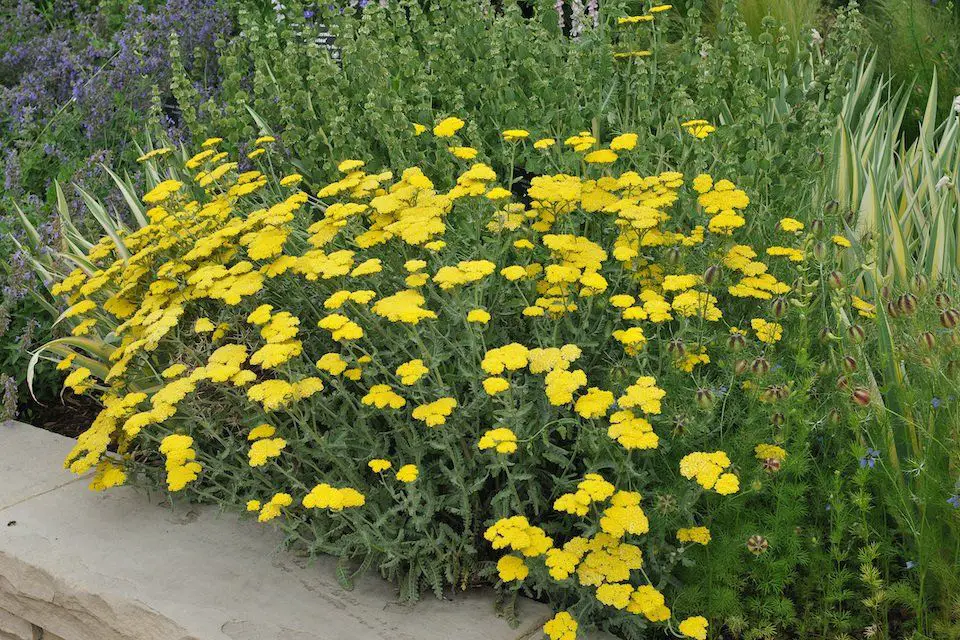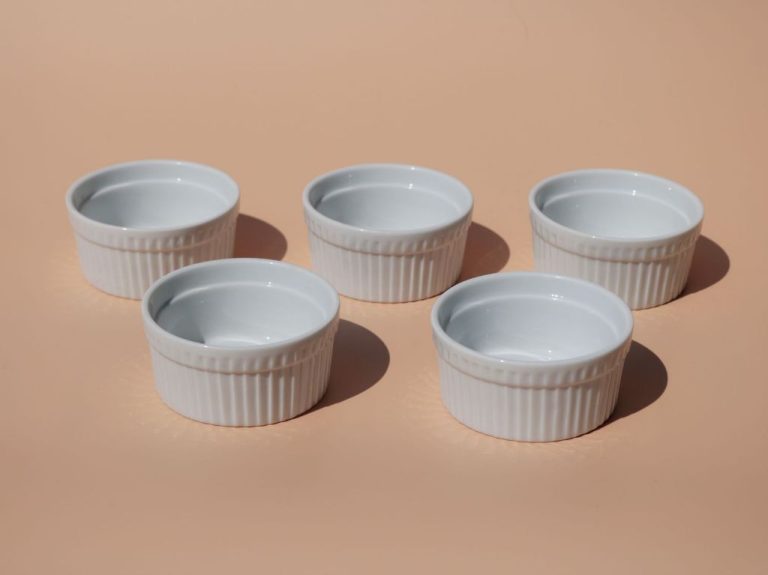What Does Golden Yarrow Smell Like?
Introducing Golden Yarrow
Golden yarrow (Eriophyllum confertiflorum) is a flowering plant native to the western United States. It grows commonly in coastal regions from California to Washington. This hardy perennial is a member of the sunflower family Asteraceae.
Golden yarrow has fuzzy green foliage and produces bright golden yellow flower heads. The flowers have a daisy-like appearance, with multiple small florets surrounding a central disc. Each floret contains 5 ray petals in a radiating pattern. The blooms are produced in clusters on the tips of upright stems that can grow 12-18 inches tall.
This plant thrives in full sun and well-drained soil. It blooms from spring through summer with peak flowering in May and June. Golden yarrow is both heat and drought tolerant once established.
The Fragrant Flowers
Golden yarrow (Achillea millefolium ‘Aurea’) is prized for its vibrant golden-yellow flower heads that bloom from early summer to early fall. The flowering season typically lasts from June through September, though this can vary depending on your growing zone and climate.
The fragrance of golden yarrow flowers is complex, with fresh, herbaceous notes along with hints of fruit and spice. According to one fragrance review, golden yarrow has “an aroma that combines the spice and fruit of yarrow, fennel, and hay, yet has a unique character all its own” (Source). The fragrance is milder than common yarrow, while still possessing a rich, honey-like sweetness when in full bloom.
Fragrance Profile

Golden yarrow has a sweet, herbal aroma with notes of fruit, spices, and herbs. The fragrance is often described as warm, rich, and complex. According to Fragrantica, the primary notes in golden yarrow’s fragrance profile include anise, pineapple, strawberry, clove, and cedar.
The scent of golden yarrow is strong and distinctive. When its bright yellow flowers are crushed or bruised, they release a powerful, bittersweet, fruity-spicy aroma. The fragrance is concentrated in the flowers and leaves.
The exact scent can vary slightly depending on factors like soil conditions, climate, and time of day. Morning dew enhances the fragrance of golden yarrow. The aroma persists when the plant is dried. Dried golden yarrow retains its scent well for use in potpourri, herbal pillows, and fragrances.
Fragrance Production
Golden yarrow produces its sweet, herbaceous fragrance through specialized cells called glandular trichomes that are located on the surface of the flowers and leaves. When the plant is brushed or the leaves are crushed, these glandular trichomes rupture and release aromatic oils into the air [1].
The fragrant compounds, known as terpenes and terpenoids, are synthesized and stored within the trichomes until needed. The production and emission of these fragrances serves an important ecological function for the plant by attracting pollinating insects [2]. The sweet, spicy scent of golden yarrow signals to pollinators that nectar and pollen are available in the flowers.
Factors like temperature, humidity, time of day, and stress can all affect how much fragrance a golden yarrow plant produces and releases into the air.
Factors Influencing Scent
The scent profile of golden yarrow can vary quite a bit depending on several factors. Climate, soil composition, and time of day all play a role in determining how strong and which notes come through the most.
Climate is a major factor, as golden yarrow produces more fragrant oils in warm, sunny conditions. Cooler temperatures and excess moisture tend to dampen the smell. The ideal climate for maximizing scent is a hot, dry environment with plenty of sun.
Soil also influences scent. Alkaline, sandy soils with good drainage produce more strongly scented plants. Heavy, acidic soils restrict fragrance production. Adding lime can help make soil less acidic.
Finally, time of day impacts scent. Golden yarrow flowers tend to be most fragrant in the morning and evening when cooler. The heat of midday causes the flowers to produce less scent. To experience the full fragrance, it’s best to smell the flowers early or late in the day.
Traditional and Medicinal Uses
Golden yarrow has a long history of traditional and medicinal uses. Native American tribes like the Navajo have used yarrow for centuries to treat various ailments (1). The Latin name for yarrow is Achillea millefolium, named after the Greek hero Achilles who used yarrow to staunch the bleeding wounds of his soldiers in the Trojan War.
Historically, yarrow was known as a “woundwort” for its ability to stop bleeding and prevent infections when applied topically to cuts and scrapes (2). It contains natural astringents as well as anti-inflammatory and antimicrobial compounds. Yarrow tea was traditionally used as a pain reliever for headaches, toothaches, and cramps. The leaves and flowers can also help treat fevers, colds, and digestive issues when consumed as a hot tea.
Yarrow has antispasmodic properties that help relieve muscle spasms and tension. The herb relaxes smooth muscle tissue and acts as a mild sedative, making it useful for treating anxiety, insomnia, and restless sleep (3). It was also believed to have spiritual cleansing powers due to its ability to promote sweating during ritual sweat lodge ceremonies.
Today, herbalists continue using yarrow for its therapeutic benefits. Modern research has confirmed many of its traditional medicinal properties. When used appropriately, it can be a versatile herb for first aid, relaxation, women’s health, gastrointestinal issues, and more.
(1) https://sowrightseeds.com/blogs/planters-library/yarrow-medicinal-herb
(2) https://sowrightseeds.com/blogs/planters-library/yarrow-medicinal-herb
(3) https://sowrightseeds.com/blogs/planters-library/yarrow-medicinal-herb
Culinary Uses
Golden Yarrow has a unique flavor profile and can be used to enhance many culinary dishes. The flowers, leaves, and stems all have a pleasant, mildly bitter and aromatic taste.
Yarrow flowers and leaves are edible and can be added raw to salads, soups, and dips to provide a flavor similar to chicory or tarragon (Cooking With Yarrow). The young leaves can also be lightly cooked or sautéed.
Dried or fresh yarrow makes an aromatic tea that tastes slightly bitter and astringent, with notes of pine and citrus (Yarrow, a Delicious and Nutritious Panacea). It is said to help soothe colds, coughs, and digestive issues.
The edible flowers can provide a pretty, golden yellow garnish for desserts, salads, and cocktails. Yarrow has been used to flavor liqueurs and bitters.
When cooking with yarrow, use it sparingly as the flavor can be quite potent. The fresh leaves, flowers, and stems pair well with herbs like thyme, rosemary, and sage.
Commercial Applications
The sweet, herbaceous scent of golden yarrow makes it a popular ingredient in perfumery and aromatherapy. The essential oil, extracted through steam distillation of the flowers, contains the compounds chamavicol and eucalyptol which give golden yarrow its characteristic fragrance1. The oil’s pleasant and uplifting aroma along with its anti-inflammatory properties have led to its use in soaps, perfumes, lotions and massage oils2.
Golden yarrow essential oil blends well with oils like lavender, clary sage, geranium, and cedarwood. It is commonly found in aromatherapy products aimed at relieving stress and anxiety as well as in fragrances and perfumes13. The dried flowers and leaves are also used to add fragrance to potpourri mixes and herbal sachets.
Growing Golden Yarrow
Golden yarrow thrives in a variety of conditions, making it a versatile plant to grow. It prefers full sun and well-drained soil. Golden yarrow can tolerate drought and poor soils, but it will flower more prolifically with consistent moisture and in nutrient-rich soil (1).
Golden yarrow is easily grown from seed or divisions. For propagation from seed, directly sow in the garden after the last frost. Seeds germinate best with light exposure. Cuttings can also be taken from established plants in spring or fall. Divisions should be done every 2-3 years to maintain vigor. Separate the roots and replant divisions 12-18 inches apart (2).
With its bright yellow flowers and lacy foliage, golden yarrow makes an attractive addition to herb gardens, perennial borders, and pollinator gardens. Its versatility and low-maintenance growth habits make it a beginner-friendly plant for gardeners.
(1) https://www.pinterest.com/pin/724446290065290412/
(2) https://nl.pinterest.com/pin/724446290056729312/
Where to Experience Golden Yarrow
Golden yarrow grows naturally throughout most of California. Its natural habitats include coastal scrub, chaparral, grasslands, open sandy or rocky slopes, and lower montane coniferous forests. It commonly grows on dry, well-drained soils and adapts well to drought conditions.
Some of the best places to find golden yarrow growing in the wild in California include:
– Carrizo Plain National Monument in San Luis Obispo County (https://www.nps.gov/care/index.htm)
– Channel Islands National Park off the coast of Southern California (https://www.nps.gov/chis/index.htm)
– Santa Monica Mountains National Recreation Area in Los Angeles and Ventura counties (https://www.nps.gov/samo/index.htm)
– Cleveland National Forest in San Diego County (https://www.fs.usda.gov/cleveland)
Golden yarrow is also commonly grown in California native plant gardens, botanical gardens, and natural landscaping. Some public gardens featuring golden yarrow include:
– Ruth Bancroft Garden in Walnut Creek (https://www.ruthbancroftgarden.org/)
– Santa Barbara Botanic Garden (https://www.sbbg.org/)
– San Diego Botanic Garden (https://www.sdbg.org/)
– Los Angeles County Arboretum & Botanic Garden (https://www.arboretum.org/)




